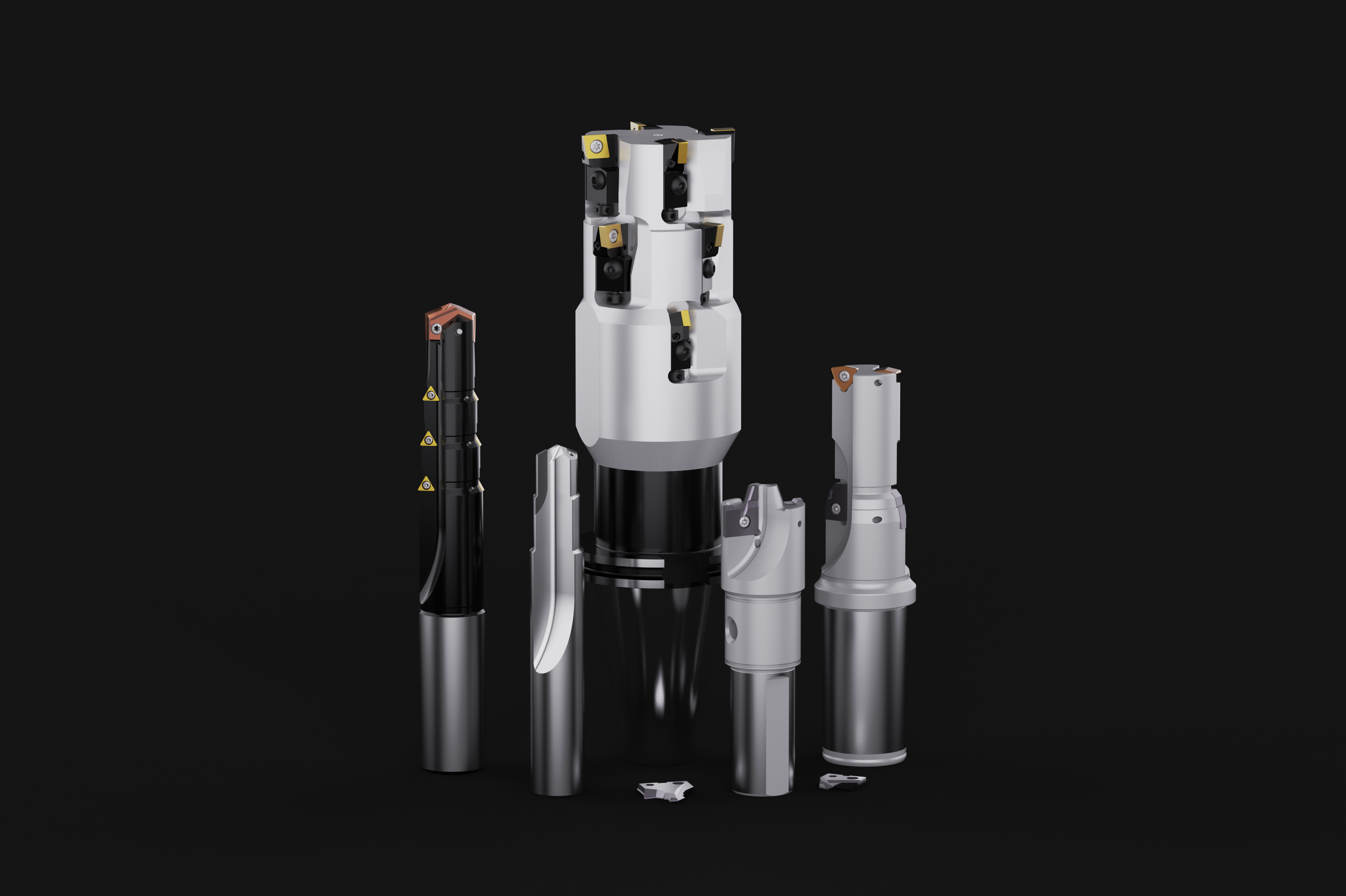Listen to the first episode of season two here, or visit your favorite podcast platform to subscribe to “Made in the USA.”
Catch up on season 1 here.
Featured Content
The following is a complete transcript for Season 2 Episode 1 of the “Made in the USA” podcast.

Scott Colosimo, Founder of Land Energy: I flew to China, and every single factory that I went to, it was how many and how soon. There was so much spark and so much life and so much newness. Great, but then as we got bigger, and we started branching out to other factories, that's where the IP theft really started to take hold. Every single motorcycle factory was just copying each other. It was dog eat dog. I mean, if you don't make money, you're starving. And that sense was real, starting a new company and doing it the way we want to do it. I said, we have to reshore it. And we got to bring it back.
Brent Donaldson, Editor-in-Chief of Modern Machine Shop: Welcome to Made in the USA, the podcast for Modern Machine Shop magazine that explores some of the biggest ideas shaping American manufacturing. I'm Brent Donaldson,
Peter Zelinski, Editorial Director of Modern Machine Shop: I'm Pete Zelinski. When we launched this show a couple of years ago, we focused on the key topics that drive our conversations about US manufacturing, the 2000s era collapse of our manufacturing workforce, controversy surrounding automation, supply chain problems that COVID-19 put in the spotlight. And what we saw in that last point in particular is a shift in awareness and understanding. The supply chain issues we've faced over the past three years have been highly educational. It's become apparent to many people outside of manufacturing, why the US needs a robust manufacturing base. We need manufacturing in order to withstand crises. We need it to provide jobs and fuel our economy. And we need manufacturing in order to be self-reliant as a country, we have a long way to go. But we're seeing Made in America become a call to action in a way that it hasn't been in generations.
Brent Donaldson: And that is why we decided to do this again. Except this time we're taking a different approach. What you'll hear over the course of this series are first-person accounts from people who are making decisive choices to manufacture here either by moving manufacturing operations back to the United States or beginning their manufacturing here in the first place. So over the past several months, Pete and I have traveled all over the country to hear from people who have made a commitment to US manufacturing. These are people who work at startups, established OEMs, and machine shops who have several different motivations to keep production within this country, often in cases when less expensive offshore options were available to them. Of course, less expensive is a relative term here as we're about to learn from our first story about a man named Scott Colosimo and his electric motorcycle startup called Land Energy.
Peter Zelinski: Scott grew up in Parma, Ohio,
Scott Colosimo: A suburban kind of hellscape by Cleveland, Ohio,
Peter Zelinski: And after high school, he attended the Cleveland Institute of Art where he earned a transportation design degree. After graduating, Scott worked for a couple of large companies and eventually landed at a foreign-owned manufacturer of vacuums and power tools that sourced many of its parts from China. His introduction to the possibilities of manufacturing in China happened there. Today, both Scott and his company, Land Energy, are back in Cleveland where Scott came from. Scott describes Lands bikes as software defined electric vehicles. The battery packs are swappable. And the same bike can serve as an E-bike, an E-moped or an E-motorcycle depending on which software mode you place it in. Scott says the great majority of Lands parts are sourced in the United States, which was not the case for Scott's former Motorcycle Company, Cleveland CycleWerks. During his time with Cleveland CycleWerks in the mid-2000s, Scott moved to China for almost two years working with manufacturing suppliers overseeing production for the hundreds of parts the bikes required. And then, he changed course. He couldn't continue in large part as you're about to hear, because of business and manufacturing culture differences that led to real struggle for his company. What was it like to manufacture in China? What was appealing about it and what were the pitfalls? Here's how Scott tells the story.
Scott Colosimo: So a lot of it is being naive and being young. Right? Like knowing the things I know now I look at the things I didn't I was like it's so freaking stupid like but what I saw was that the cost of the components to simply do a smaller displacement motorcycle, we could do affordable US made bikes and retail them for about five grand to about $10,000 and the entire industry was looking at what I call the bike mortgage right, they were looking at the $15,000+ and it was all high tech Japanese or big V twins. And a lot of it was focused on racing. A lot of it was focused on that kind of top 1% And mind you I raced, right, so I was really into. I still love Ducatis, I was really into Ducatis and I had just as much fun on my 620 monster as I did on my superbike. And the monster was an air-cooled kind of old tech. It was just not a very complicated vehicle. And you pick up a huge one for four grand, where the 749, the 999s, we're starting at, like 22,000. So I started looking at all this and I said, Well, there's an opportunity just to make fun, affordable bikes, right and not focus on racing. You're not focused on the top tech and just focus there. And I mean, I thought at the time that it was a great idea. But I walked into so many factories where I was just told to leave, right? Or, like, people asked me where my dad was or who Scott Colosimo was, and I was 24, 25, walking into factories, telling them, I'm starting a motorcycle company, and it just didn't resonate. So mind you, it's the great recession of our time, right? The entire country was bad, no one had jobs, nobody had. There was no innovation happening, all right, and I'm trying to start, and look, Cleveland CycleWerks wasn't that innovative? Right? It was just looking at where the white space was and focusing on that white space, which was this like five to $10,000, affordable bike, something that made you feel good to ride. I thought it was a great idea and I called up a big V twin, and I'm like, hey, I want to make some affordable, like 600 cc made in American Motors. And it was just like, I think they were doing like the X wedge at the time, which was like, the biggest V Twin ever to be made sort of thing. So that fell on deaf ears. It was really disheartening. So six months, we tried, and we tried and tried and tried. And all we were getting was No, no, no, no, no, no, no, no, no, no. And you know, okay, well, if you pay for millions of dollars a tolling, we might make some parts for you. The reasons that I was hearing no, are what I'm guessing are the reasons. One of them we are a startup. Second, we are coming out of this massive recession, so there was not a lot of capital. I don't think a lot of people were leaning into innovation, or the word startup you did not hear in Cleveland at that time. I looked very young. And I was telling people I was going to do big things. And the things that I was trying to do required millions in capital to do, which I did not have. It's like, six strikes, it's more than three strikes against me. Cleveland is a no bull kind of town. It's a lot of doers here. You got to do it, you got to prove yourself and I was unproven. And at that time, I had all these contacts in China. So I fired up MSN, and I said, Hey, I'm trying to make these bikes in America. Could we do this in China? Every one of them like, yeah, fly over here, come here. Come to China. So we looked at China, Korea, Taiwan, Southeast Asia, India. I looked everywhere. But I just had this huge network of contacts in China. So I think there were just too many kind of strikes against me at that time to really get anything moving here. In contrast, when I flew to China, and every single factory that I went to, it was, how many and how soon? Like what's the quantity you need and how soon do you need them? And at that time, China was a manufacturing based economy. Right now she's trying to change it to a service based economy, right,. Higher value sort of jobs, but at the time, manufacturing was King in China. And there was an idea vacuum, there were no ideas, but incredible amounts of manufacturing. Whenhen I walked into a factory in China, there was a need and a need. I needed someone to make things, they needed someone to design things. So it was a, it was a relationship that worked. And I was sitting across the room from people my age. So I was sitting across the room from 20 something engineers or MBAs that were running factories and making millions of things. And I think that was a great equalizer. Because a lot of these Chinese were educated in the UK and the US. They all went out to get their education and then came back with all these new ideas. And I think they were in this repressive sort of space as well of this old Chinese manufacturing economy that was very much about hand making. And these guys were buying robots and they were buying brand new equipment from the US and they needed to make stuff on it, right? They were buying, at that time it was CNC benders were the new thing, and no laser coping out, but they were buying coping machines. And they're investing in tech. So it was different. And I say it like this, I imagine that's what the US was like during the Industrial Revolution, because we were literally going to some factories that were dirt floors, with brand new Haas machines, one wall and in a roof. Right? This is basically a factory that was outside. You'll go back three years later and they have a brand new steel building, state of the art building right next to where they started. Fully automated. It was, it was a time of rapid rapid change. I mean, the sort of spirit, every time I flew to China, it was so exciting because there was something new. We visited two to three factories a day for like two months. But I was young, I just hopped on a plane, I'm like Let's do this. Let's see if we can do it.
[Related: Another example of a small manufacturer returning manufacturing work to the U.S. from China is Dustless Technologies. The company now makes components for its wet/dry vacuums through additive manufacturing rather than injection molding.]
We landed on three different factories. So mind you, no manufacturing experience on our own. No experience working with the Chinese on our own. There was just like inexperience all around. So we're sitting there, trying to figure out how to do this and one of my partners at the time was like, Screw it. Let's give, let's give this design to all the Chinese factories and have all of them make it. And I was like, Oh, that's a surefire way to make sure we never make any money, right? Because I'm like, they're all gonna start making it. This is not the way that the Chinese think, right? The way they think is, things have changed so much and in the short period of time, but at that time, again, being the idea vacuum, every single motorcycle factory was just copying each other, right, so it'd be like a copy of a Honda, then the Chinese would copy the copy, and then it would copy the copy of the copy and then copy that copy. It would be like six steps removed, and they were just producing so many motorcycles that they couldn't get enough ideas. So we basically found a factory that a couple factories that were making product of a quality that we could accept that on their own, they had at least a basic ISO system in place. And they at least had some basic checks and balances. And I said, Okay, I rejected this idea of giving every design to every factory to make and I said, alright this factory in Wushi is going to make this bike, this factory in Guangzhou is going to make this bike and this factory in Thailand is going to make this bike. This whole keep it separate, so if one factory screws us, we at least have some things to produce. But you know, you got to feed the beast, and you got to produce 1000s of bikes. It kept happening. I basically had to move to the factory. The first factory we ever worked with, the owner, we became really good friends. And he was the most loyal factory we've ever had. The first one we landed at, never undercut us, never undersold us that was the highest quality. It always improved. It was great. But then as we got bigger, and we started branching out to other factories, that's where the, the IP theft really started to take holdThe reason I had to move to China is because we were making and sourcing parts. And it was that it was the same thing. Maybe they captured 80% of what we intended, but it was always that 20%. I don't know, if you've ever looked at a copy product, and you're like, there's something just not right about the proportion or the weight or you're just like there's something like not right about that. But in motorcycles it's especially true, there's a few little things you can get wrong and it's totally off. So making sure the design was right ,they were engineered properly. We're using the right metal, using the right aluminum using the right process, we've even had stuff that was like supposed to be forged, and they're like, well, it's cheaper to cast it so we're just going to cast it and it's like, well, can't do that for a structure rigid like you. You need the forging, right, you can't cheap out so it was all those things and I was trying to manage it from the US and I was like I just can't do it. I lived on the factory floor in Ningbo a small city, for about a year and a half producing the parts. It was a need thing, right? I was like, it's never gonna get done unless I move there and do it. Or at least it's never gonna get done right. So I remember, we made a really bad decision really early on, we selected a frame factory that they just could not get the quality of the chassis we needed right. This is a old school American bobber and the welds are like snot, right? Just pop in and not enough heat, not enough, just horrible welds. And it's like $180,000 mistake I made within like months of starting the company. A massive mistake. And actually, our first factory stepped up and said, Hey, we know you don't have the money to do it. We don't want the project to fail, we need this project to work. So what if we pay for new tooling, we move it to a factory we know that can make the chassis for you. It wasn't all bad. I still have some really good friends in China, some some people we still manufacture with it's just overall, the IP theft was just constant.
So in some ways, manufacturing of China's funny money. Because the loans aren't always real. They don't always have to get paid back.There's a big portion of it, if you're a Chinese manufacturer, you're a proud supporter of the Chinese people. And some of it's just about keeping people employed. Some of the state run manufacturers, they never have to make money. So there's no sort of margin talks. When you really try to drill down into what's the real cost of this part, it gets real fuzzy. And it's a little different now. But back in those days it was like, well, what's the cost of the stamp piece? 2.50. Okay, so we know it's not 2.50 Because we can get them from 15 cents from this factory over here. So what's the real cost? Oh, well, we'll give it to you for 14 cents. I'm like, wait, we know what the tonnage is, we can roughly calculate what this is going to cost. How did you arrive at that original 2.50? Well, we base it on, you never get to the bottom of it. What I realized over the years is that it was really, and this is years ago, it was really about job creation. What we realized quickly was that the reason every manufacturer wanted to work with us is because we were focused on export. And export was very very lucrative at that time in China. It was really interesting, the kind of education you get from being on the ground. And everybody said, Yes. And I truly mean this, when I say I imagine that's what the Industrial Revolution was like here. There was so much spark and so much life and so much newness, and this push, it's dog eat dog. I mean, if you don't make money, you're starving, right? And that sense was real. So I still remember, we worked 24/7. I ate in the company cafeteria, we're always there. 2:30 in the morning, I drew a new piece we needed on a piece of cardboard I said we need the shock mount, we need it made. We didn't have any material for it, nothing. And one of the workers. He's like there's a CNC shop right next to the noodle shop right across the street. Like sweet, I'm like, let's go there in the morning goes, no, let's go now and we bang on the door. It's a riot gate, boom, boom, boom, boom, boom, and the dude sleeping on a cot above his CNC machine. He lived there. His whole family lived there. And we said, hey, we need these parts tomorrow, because we got a bunch of parts coming in. We need to make sure that everything fits. And he's like, okay. He's like, they'll be done for like, 4:30am. It's like 2:30am. So I'm like, what? And he goes, I'll make them right now. He goes, you pay cash. I'm like, yeah, we'll pay cash. He's like, just how many how much? And two hours, he'd have everything done. Mind you. It's like a little hand drawn piece of cardboard. He's programming it in G code as we're sitting there, like right there. He's like, there'll be done. No problem. And so all the guys like Well, let's go home and get a few hours of sleep and come back and we can Back and gotten the office and there's a box of parts sitting there. And he's waiting there for his money. That's a hunger. And I will say I admire that. I mean, there's something about that I feel like that American kind of ingenuity and that spark was there. And if you cut through all like the communist rhetoric and all the like it was just people being people hungryand I really appreciated that because that speed. When II would be in China and I would come back to the US it was like slow motion. That's what I was looking for when I was working at the car industries, I was looking for that sort of like, that spark of life. This dichotomy that is China, it's just culturally different. I would go to factories where the factory owner would be showing his friend who also owned a factory, his entire r&d department, which he is showing his competitor, the advanced projects that he's working on, which is utterly absurd to me. He is showing one of his biggest competitors, his competitive advantage, and it's just culturally different. So this idea of like, it's mine, I created this, it's mine. It's different. So it's not that like the Chinese are just out to screw everyone, it's that it's still very much an idea vacuum. They punch above their weight when it comes to manufacturing. And if it's dog eat dog, and you're trying to survive, you're trying to keep your factory alive, you're going to do whatever the hell you need to do to produce something new. Cleveland CycleWerks would have never existed without the help from Chinese. The millions we made and the amount of bikes that we made the 1000s and 1000s of bikes we made, I could have never done that without my Chinese partners. But they took their pound of flesh. So they take our IP and give it to their brother's factory, or take our brand and slightly change the name and start selling product under our brand. We even had one Chinese factory copyright CCW instead of Cleveland CycleWerks. And they started selling bikes under CCW, our own brand our own factory in China, and cut us out. One of our Chinese factories took our product, went to one of the customers we're trying to set up in Spain, and then sold our product below what we could sell it to, because they're making it for us to our own customer, and killed an entire country for us. They just changed the brand on it. The Spanish distributor didn't care, they got bikes cheaper than we could sell them and they were a okay with that. We had our own bikes being sold into our own protected countries under different names. It was constant. When you're trying to create a brand of integrity and value and then all of a sudden someone sees the same product with a different name on it being sold for cheaper in the same country, most customers honestly don't care. That's what one thing I learned is that most customers don't care so they're gonna buy that.
[Sponsorship break]
Starrett: For more than 140 years, the LS Starrett company has been a leading manufacturer of precision measuring tools, gauges and metrology equipment. Recognized throughout the world for its exceptional quality, accuracy, craftsmanship and innovation, Starrett has earned a reputation as the world's greatest toolmakers Starrett today proudly carries on its skilled tradition as the only company making a full line of precision measuring tools in the United States of America. Starrett measuring America since 1880. Learn more at starrett.com.
[Sponsorship break ends]
Brent Donaldson: This is Rosemary Coates, Executive Director of the Reshoring Institute. Prior to joining the reshoring Institute, Rosemary spent several years working as a management consultant in China, where she learned a lot about how to mitigate potential risks for American companies that were outsourcing production there. When I talked to Rosemary, I told her about Scott's experience with Cleveland CycleWerks.
Rosemary Coates, Executive Director of the Reshoring Institute: That's, of course, IP protection issue. When companies have moved to China or even source products in China, maybe just parts or they're bringing back kits or oher products to the US. In the meantime, you have probably sent your schematics, maybe your tools and dyes over to China to help on the assembly line. You've taught the Chinese how to manufacture your product, what the quality standards are, where all your sources are, whether you're sourcing from other companies in China, they know where you've gotten those parts. They have all the makings of doing it themselves. And very often, that's exactly what happens. So maybe someone's cousin or uncle down the street and around the corner, sets up shop, and they make exactly your product, and they just rebrand it with something else. In other cases, when companies actually leave China, and they close down their manufacturing and leave China, just think about what you've done You have taught them how to make your product, where the parts are coming from, what the quality standards are, and so forth. So when you close shop, it's not like the manufacturing side is going to go to sleep at night and forget everything about how to make your product, they're going to continue to make it and very oftentimes compete with you on the world market under a different brand. One other important thing to consider is if you have a product that the Chinese government wants to manufacture in their country, they're not going to let you leave. It's not like America where you can just close the door and turn off the lights and set the alarm and walk away. Not the same in China, you have to apply for a permit, which may never come, you have to work with the local authorities to layoff people, essentially fire people, most of the employees are on some kind of employment contract. So you have to pay out to the end of the employment contract. These are all things that you have to consider. And if you don't, I mean, sure, you could just go hop on the next plane back to the US. But if that's the case, you may never be allowed to come back so they can restrict your visa. They can take over your manufacturing site. I mean, there's all kinds of bad things that happen if you don't comply with the laws.
Peter Zelinski: Here's Scott Colosimo, talking about his decision to leave the country and start a new E-Motorcycle Company in Cleveland land energy, where he's made the decision to source as many parts as possible in the US and even better, he says, as near to his hometown as possible.
Scott Colosimo: I can't say anything's right or wrong, I can say that I'm just not going to accept it anymore. And I'm not going to work within that context anymore. And those were, those are hard lessons for me, this 12 year journey that I'm on here. But starting the new company and doing it the way we want to do it, I just said we have to reshore it. And we got to bring it back.
So starting in the Eevee space, started about 2014. And it started like anything else. Cleveland Cyclewerks started me custom building bikes in a shop. And I just started custom building some electric bikes. And it was as simple as that. So again, I started making basically high powered lightweight bicycles. And think my son was two years old, the first e-bike I kind of chopped up and made, so that's eight years ago. So it's about the right timeline. And then I put on a shelf because the batteries weren't great. They were very, very expensive and there was just nothing that electric did better than gas at that time. I continued doing gas bikes and saw this massive growth. The Chinese government, mind you I was still Cleveland CycleWerks 100%, and I was going back and forth between China in the US and the Chinese government just outlawed in every major city gas, you could not ride gas bikes anymore. So they started with the bicycles. Literally within like a few months, we saw an entire economy change to electric. And that's when I started saying, Wow, this is it's getting pretty big. So 2015, 2016, 2017, but it was still in the infancy. 2019 came in and then Evan Paner, one of my young designers, came in with like a massive passion for electric bikes. Wide-eyed stupid kid. And he just kept pushing me push and pushing and so 2019 into 2020 is when we really started getting serious on making some prototypes. And then 2020 is when I said, mentally I made the shift, and you have to look at things two ways. I look at things as an enthusiast, but then I also look at things as a business professional, right as a manufacturer. And 2020 is when I said I just can't, mentally I can't continue to manufacture gas, while I'm also pushing the electric just because they're so different. But then I kept getting pulled back to this legacy, right? Okay, we need parts we gotta order from China. Okay, we need this. So I was like, this, like, Now now, make it in the US. And then Cleveland CycleWerks kept pulling me back to China. And I was this. We're pushing the future. And we're getting drawn back to gas and then I got all my development guys on electric and none of them wanted to go back to ga. Like, we cannot mentally do this. There's so much newness here, when innovation drives you and then you have to kind of go back to the old ways. Every single person here was like, when are we going to just end it?
Brent Donaldson: So in a stroke of unfortunate timing, Scott and his team relaunched a Cleveland CycleWerks bike called the Falcon right at the onset of the pandemic in March of 2020. After their event venue closed down, they ended up doing the launch on Facebook Live. But it was during that time that both Scott and his team realized that if he was going to attempt to make affordable electric motorcycles in this country, he was going to have to completely start over from scratch. No more Cleveland CycleWerks and its catalog of 1000s of parts. So that's when Scott and his team made a complete break, he sold Cleveland CycleWerks and started what became Land Energy, which produces electric motorcycles with swappable battery packs that can easily be removed and use almost like a generator, camping, the beach, wherever the batteries are about the size of an oversized lunchbox 25 to 60 pounds each, they have USB C ports, so you can plug your devices and other small electronics into them. And the idea is that when the battery wears out, after a few years, battery tech will have advanced by that time, and the next one will last even longer. This was always the core idea for Land.
Scott Colosimo: The pandemic really brought into focus that this idea of an a just in time 24/7 global, flawless supply chain was a complete fallacy. It was so fragile and it was not realistic. For 10 years, anywhere in the world, I could have just about anything manufactured off of a print in 15 to 30 days, like clockwork. If it took 45 days, there was some disaster that happened tha. We were shipping bikes 20 to 30 days consistently for 10 years, that's pretty insane. Or we get an order and we could arrange 200 Plus parts in one place from multiple vendors, and have them shipped within 30. That's pretty nuts. And for a very small company to just in time, that was nuts. And then we could have $3,000 containers that we were shipping, 14 days anywhere in the world. That's pretty nuts like. And even at the time, we're like this, we are living in like a golden age, like this is insane. I don't think that's coming back. I really don't. Number one, I think Americans realize that if we don't make things we're gonna we're gonna be in a world of hurt. There's a sort of recognition from a local to a federal level, that we have dug a hole so deep, that there needs to be a concerted effort from industry and government to dig us out. And from a supply chain, mining, manufacturing. The whole system has been destroyed for the last 30 years and we need to rebuild it. So there's a real understanding right now that we need to rebuild that, there's an understanding that we can't live on 12 to $30,000 container shipments for goods. It's not possible. So again, we're lucky we had an idea. We saw where the market was going nd what I tried to do 12 years ago here in the US is now viable today. There are a lot of manufacturers as well that are investing in high technology here, which we didn't see 10 years ago, even 12 years ago, the highest tech factories I've ever been in, were in China, and the Chinese continued and continued to invest where you have completely automated factories where I was not seeing that here, You'd go to the GM or the Chrysler plants in Detroit and they look the same way they looked in the 60s. They'd retool them and do things. But it didn't look anything like the factories I was walking into in China. So we're seeing government, we're seeing industry, we're seeing a massive investment in this industry. 4.0, right, I'm giving you air quotes, this buzzword that everyone likes to talk about. But industry 4.0 is just being smarter. Using robotics, and using additive and using different methods in a smarter way. And then I think there's an energy transition that we're going through in the US. So we're seeing that, but then we're also seeing globally, government's understanding that if they're not a part of this energy transition that they're going to be left behind. When I see it, and to me, this is bigger than vehicles. There's a whole revolution that's happening and we need to, as a country, we need to have a concerted effort to push as hard as we can. Because if we don't, we're just going to be importing all this technology.
Land was really established in 2020 as an LLC, and then we transitioned to a C Corp. And we started bringing in some capital to really scale it. So the transition was pretty quick. And being in such an intense environment with a group of people that was so focused on r&d, we really quickly, and we use the product intensively. Every time we 3d printed or CNC'ed, or anytime we made a part, we'd go out and use it. The way that manufacturing is going, at least on the small volume, where we're at, there's still massive stamping plants, where when you're producing millions of parts that it makes sense. But there are a lot of smaller manufacturers here in Cleveland, actually, throughout the Midwest that are looking for that kind of mid ground. We're talking a few 1000 pieces. But we've seen that price come down considerably to where some of these small run parts to tool up even an $8,000 tool, if you're only running a couple 100 pieces, it doesn't make sense. I think it's a whole industry shift. The US is doing things that the Chinese don't like doing, which is the small to kind of mid volume manufacturing, which is really where we're going to be living for the next two years. A lot of it's just looking locally to solve the issues we were trying to solve globally before and it's shrunk the heartburn, because it's great knowing on Friday, my engineer and my fabricator, drove in the morning to our robotic welding frame factory and solved an issue and they were back here and we were all working together in the afternoon. Like we could not do that. If we were if we weren't doing it locally. I think it's just smarter. With the issues with logistics, the cost of logistics and the kind of instability with everything right now, local manufacturing, or, you know, let's say in country manufacturing is just a lot easier. We believe that there's going to be a golden age of two wheeled transportation or what we call small mobility. And we're seeing it and it's like a cellphone payment or the vehicle needs to live within the confines of where the current generation is. The current generation is tech forward. And some of that understands that you can use it for more. And that's where the energy portion comes in. So the batteries have plugs and USB, a USB C ports. And you can use those to power everything. You could use these things if the power goes out as a small battery backup in your home. When you go out and you go camping, or let's say you go to the beach, you have a mobile power unit with you. You know the tech forward consumer or the tech forward rider doesn't want to be tethered. So you can now untether, stay longer. This idea of you can work from anywhere. So kind of a concept around, not a new way of living, but just a way of untethering right you don't have to live in the office anymore. You don't have to be in one place. It's an ultimate form of rebellion. It's a freedom machine.
Peter Zelinski: Scott says that today, the company's bikes contain roughly 80% American made parts. The exceptions are mainly the cast parts, which can still be difficult to source in the United States for smaller runs, the high value parts, the bodywork, the chassis, the controls, the software, all are sourced in the US. Scott says the company has about 150 suppliers, including some suppliers that are seeking to become his company's contract manufacturers as his production scales, which is a welcome sign. Recently, Land Energy finally got to make its proper debut in person. At the recent Consumer Electronics Show in Las Vegas, where Land E-motorcycles were on display. You can check out the Land models for yourself the district and the district scrambler at Land.Bike.
Brent Donaldson: Made in the USA is a production of Modern Machine Shop and published by Gardner Business Media. The series is written and produced by Peter Zelinski and by me, I mix and edit the show. Pete also appears in our sister podcast all about 3d printing or additive manufacturing. Find AM radio wherever you get your podcasts. Our outro theme song is by The Hiders. So if you enjoyed this episode, please leave a nice review. If you have comments or questions, email us at Made in the USA at gardner.com Or check us out at MS online.com/madeintheusapodcast.
RELATED CONTENT
-
Made in the USA - Season 2 Episode 4: A Measured Approach
The L.S. Starrett Co. has been manufacturing precision measurement tools in Athol, Massachusetts, since 1880. Attention to U.S. manufacturing often focuses on reshoring manufacturing from other countries, but Starrett never left. The facility in Athol employs hundreds and produces thousands of tools that remain vital for measurement in machining and other fields.
-
Made in the USA - Season 2 Episode 3: The Robots Come Home
The latest episode “Made in the USA” podcast explores a company that uses collaborative robots, one of the key tools helping US machine shops and other manufacturers compete with lower cost countries by automating production.
-
Made in the USA - Season 2 Episode 2: Man, No Smoke!
When Puneet and Neelam Neotia moved from India to the United States several years ago, they brought with them a family background in manufacturing and CNC machining. Now the couple is working to get their startup machine shop off the ground, sourcing new customers and getting the word out about their shop in Clarksville, Indiana. The couple — proud to publicize their "Made in the USA" parts — is leveraging family connections and manufacturing capabilities back in India, but not in the way that some people assume.

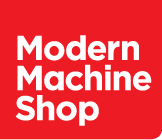


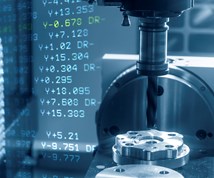
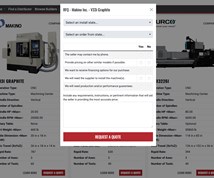
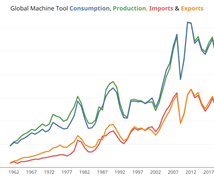

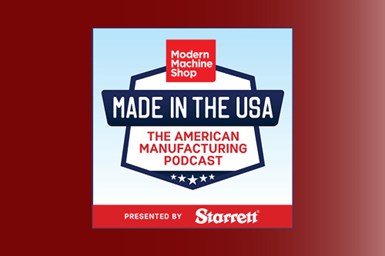
.1692800306885.png)

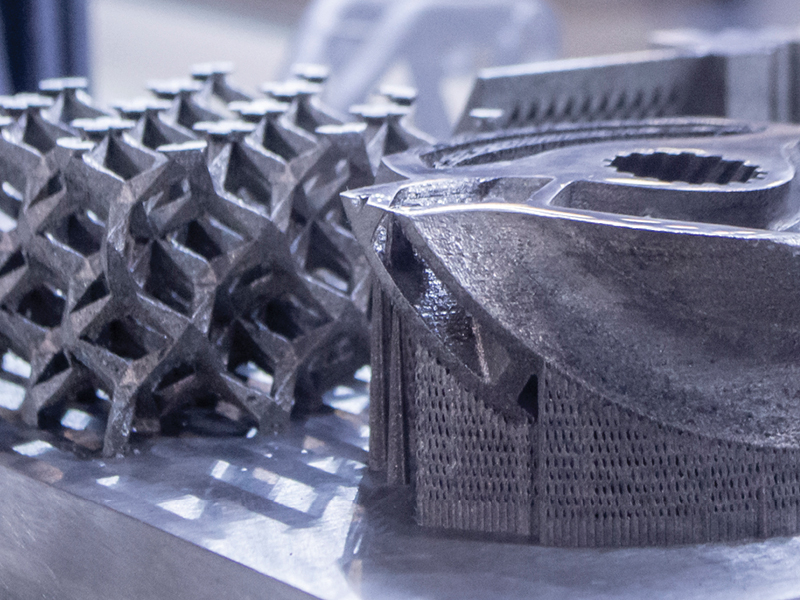
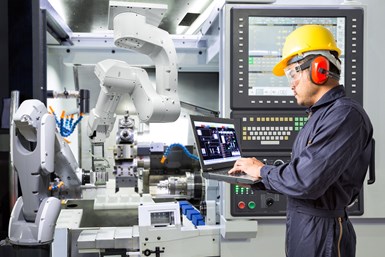

.1687801407690.png)
